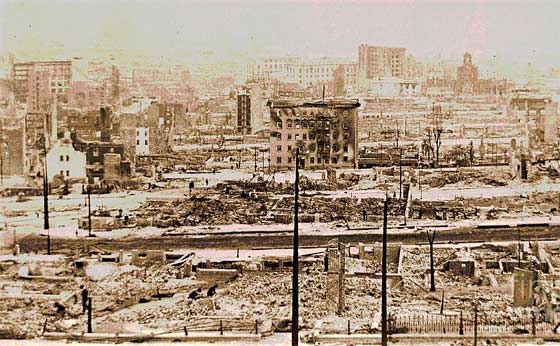3 Types Of Disaster – Understanding Your Vulnerability


The way I see it, there are three high-level types, or categories, of disasters. Natural, Technological, Intentional. Each potentially causing damage to infrastructure, property, lives.
Natural Disaster
Earthquakes
Wildfires
Floods
Extreme heat
Hurricanes
Landslides
Thunderstorms
Tornadoes
Tsunamis
Volcanic eruptions
Winter storms
Solar flare, CME
Technological Disaster
Hazardous material event
Nuclear power plant accident
Cyber (unintentional or otherwise)
Power Grid failure
Financial
Intentional Disaster
Chemical
Biological
Radiological
Nuclear
EMP
Explosive weapons
Key Elements of Disaster
Regardless of the event, disasters have several key elements in common:
- They can be very unexpected, although some are forewarned.
2. Help, Emergency responders, and Services may be unavailable and/or overwhelmed.
3. Lives, Health, and the Environment may be endangered.
4. In the immediate aftermath of a disaster, needs are often greater than what others can provide.
Understanding Your Vulnerability
Assess your own vulnerability. This will enable you to prioritize preparedness measures and to target effective actions.
It is useful to:
- Identify the most common disasters that occur
- Identify possible hazards with most severe impact
- Consider recent and/or historical impacts
- Consider what to expect for disruption impact (e.g. services and length of restoration)
Examples of Possible Damage to Infrastructure
Transportation
- Inability to assess damage
- Inability to escape or evacuate the area
- Emergency Services prevented from reaching victims
- Police prevented from reaching areas of civil unrest
- Fire departments prevented from getting to fires
- Flow of needed supplies (food, water, etc.) is interrupted
- Roads are closed and/or impassable
Structures
- Damaged critical facilities unable to function normally (e.g., airports, hospitals)
Communication Systems
- Victims unable to call for help
- Families and friends cannot communicate
- Emergency services communications possibly disrupted
Utilities
- Loss of electrical service
- Damaged water infrastructure
- Increased risk of fire or electrical shock
- Limited access to fuel, e.g., pumps that may not work
- Loss of contact between victims and service providers
Water Service
- Inadequate water flow, which results in notice to boil water and hampered firefighting capabilities
- Increased risk to public health
Fuel Supplies
- Increased risk of fire or explosion from fuel line rupture
Financial Services
- ATM machines do not work
- Credit card systems inoperable
What’s the point? Well, as I often do here, to get people thinking about preparedness. There are different kinds of disasters. Some more likely than others. All of those threats have various probabilities actually happening. We most often make our preparations based on the most likely cases first, because some of them are quite remote.
Just spend a little time thinking about your own regional or personal odds of any given disaster. Many things are out of your control. However you ARE in control of your preparedness.
